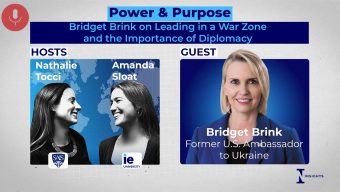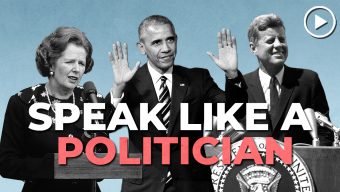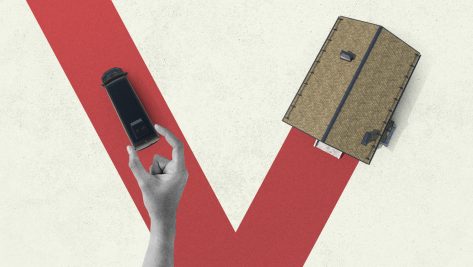As the co-founder of a small business, I am frequently asked, “What is your business model?” This question carries with it the belief that in order to succeed, a business must fit within the various typologies of making money. You need to be a subscription business. Or freemium. Or an ecommerce business, or whatever method is currently at the height of organizational fashion. A business owner is expected to do and rationalize things in a certain way. If you want to grow — let alone sell — a business, it’s necessary to have a neat and quick response to the question of your business model — and it better be a killer, crystal clear one, otherwise the money men will make a hasty retreat.
Similarly, when I talk to people about their jobs and careers, I am often staggered by the sheer certainty that people can bring to their work. They explain everything in terms of passion and focus, and their careers and lives are efficiently mapped out in a linear narrative of achievement. They have a stunningly assured view of what they do and how it fits into what they did before and what they will do next. One corporate friend has his career planned in such a way: a couple of years in New York, then a spell in Europe, and then a return to Asia before a final role on the coast somewhere. He is running according to schedule.
But, the way we are encouraged to believe that life and organizational life can offer a coherent narrative has always troubled me. Life — and business life — is messy and rarely does it play out the way you would expect, or even like. Your skills, passions, aspirations, and plans change along the way — unless you are very lucky, obstinate, or ignorant (no offense to my corporate friend). Similarly, organizations are complex and riddled with ambiguities and uncertainties. Despite their public pronouncements, they tend to offer little in the way of coherence.
In the year before the pandemic, I had the opportunity to visit the Chinese company Haier at its base in Qingdao. Haier’s hugely innovative approach to management offers very little of the black-and-white certainties so commonly beloved by corporations. Instead, there is a lot of overlap, autonomy, dynamism, and change. Trying to make sense of the company is, I eventually concluded, a fool’s errand: it is constantly evolving and developing, and its power appears to lie within the greyness, the unwillingness to offer pat solutions and unrealistically tidy business models.
Virtually by definition, entrepreneurs are comfortable with ambiguity.
Walking around a Haier air conditioner factory, I was reminded of a book I wrote with Randall White and Phil Hodgson more than 20 years ago. It was going to be called White Water Leadership, built around the metaphor that leadership is a lot like white water rafting. Then, as things have a way of happening, there was a political scandal in the US that involved the name white water and we had to change the title to the bland Future of Leadership. (This is an example of how life can pan out, even with carefully laid plans.) In the book, we argue that the people who have the requisite skills to offer leadership in our uncertain world are children and accomplished travelers because both are highly comfortable with ambiguity and are willing to ask fundamental questions.
This trait is also evident in entrepreneurs, who often have a child-like element to their enthusiasm and willingness to carry on despite there being rational evidence telling them to stop. Virtually by definition, entrepreneurs are comfortable with ambiguity. They are opportunistic by nature. They seize the day first rather than considering whether something fits into a business model. They follow their passions and inspirations and throw coherence to the wind.
Incoherence is reality, but the quest for its opposite — for a nicely tied bow atop consistent, logical understanding, all-boxes-checked coherence (or, at least, an explanation that suggests such a thing) — is a powerful human instinct. All the money spent on corporate branding and developing corporate culture is part of this search for coherence. They are activities with the objective of creating a consistent narrative that details what an organization values and how it acts.
Coherence plays out most powerfully in the world of leadership and the notion of heroes. Leaders, like all humans, are complex, confused, and nuanced but in the portrayal of their work all this humanity is shaved off, their edges rounded. Today’s leaders offer strong uncomplicated narratives, simple values, beguiling certainty. They present themselves as straightforward in a way that life rarely is.
You can see this playing out in the biographies of leaders and other notable figures, whether they are from politics, business, or the arts. Biographies seek out a strong and simple narrative that navigates directly through the clutter of life. Biographies cohere.
Craig Brown is the biographer of Princess Margaret (Queen Elizabeth’s sister) and The Beatles, among others. In an essay in The Times Literary Supplement, Brown observes that a “shortcoming of biography lies in its bias towards coherence. In their drive to create a seamless narrative, biographers are forced to conceal the randomness of life, the contrived nature of ‘character’ and the unpredictability of human beings.” Casting politicians, CEOs, and artists as heroes offers a coherence easily consumed and, the more incoherent a life’s material (the more human a subject), the more biographers struggle to create a narrative that fits the idealized template.
The life of the American poet Ezra Pound offers a case study of the battle between coherence and incoherence. Pound was a constitutionalist, a fascist, and a Confucian. His life and opinions are riddled with inconsistencies, contradictions, and intolerances. His most important work, The Cantos, is colossal and challenging. He worked on it for over five decades. Towards the end of the poem, in Canto 116, he laments, “I cannot make it cohere.” There is a sense of frustration and disappointment. Having set out to create a lengthy masterpiece without a plan, the artist is surprised to find that the result is fragmentary, lacking a plausible coherence-providing coda.
Despite all this, if you read biographies of Pound, there is a clear and neat narrative that offers coherence to the ramshackle edifice of the poet’s life and beliefs. Again, this suggests that tidying up untidy narratives and cutting through incoherence is necessary if we are to understand art and history. But not only is that not real, it assumes that we are incapable of understanding complexity. Contradictions stalk every corner of most people’s lives. For example, in her study of D. H. Lawrence, Frances Wilson notes: “His fidelity as a writer was not to the truth but to his own contradictions and reading him today is like tuning into a radio station whose frequency keeps changing. He was a modernist with an aching nostalgia for the past, a sexually repressed Priest of Love, a passionately religious non-believer, a critic of genius who invested in his own worst writing.”
Like Pound and Lawrence, modern organizations are awash with contradictions. They espouse the merits of teamwork and yet reward narcissistic individualists. They announce grand, long-term strategies but act in a tactical, short-term way. They encourage people to experiment and take risks, then punish those who do so. Organizations are human. Those which best serve the humans within them are those which accept the cluttered vagaries and incoherence of life and work.
© IE Insights.











